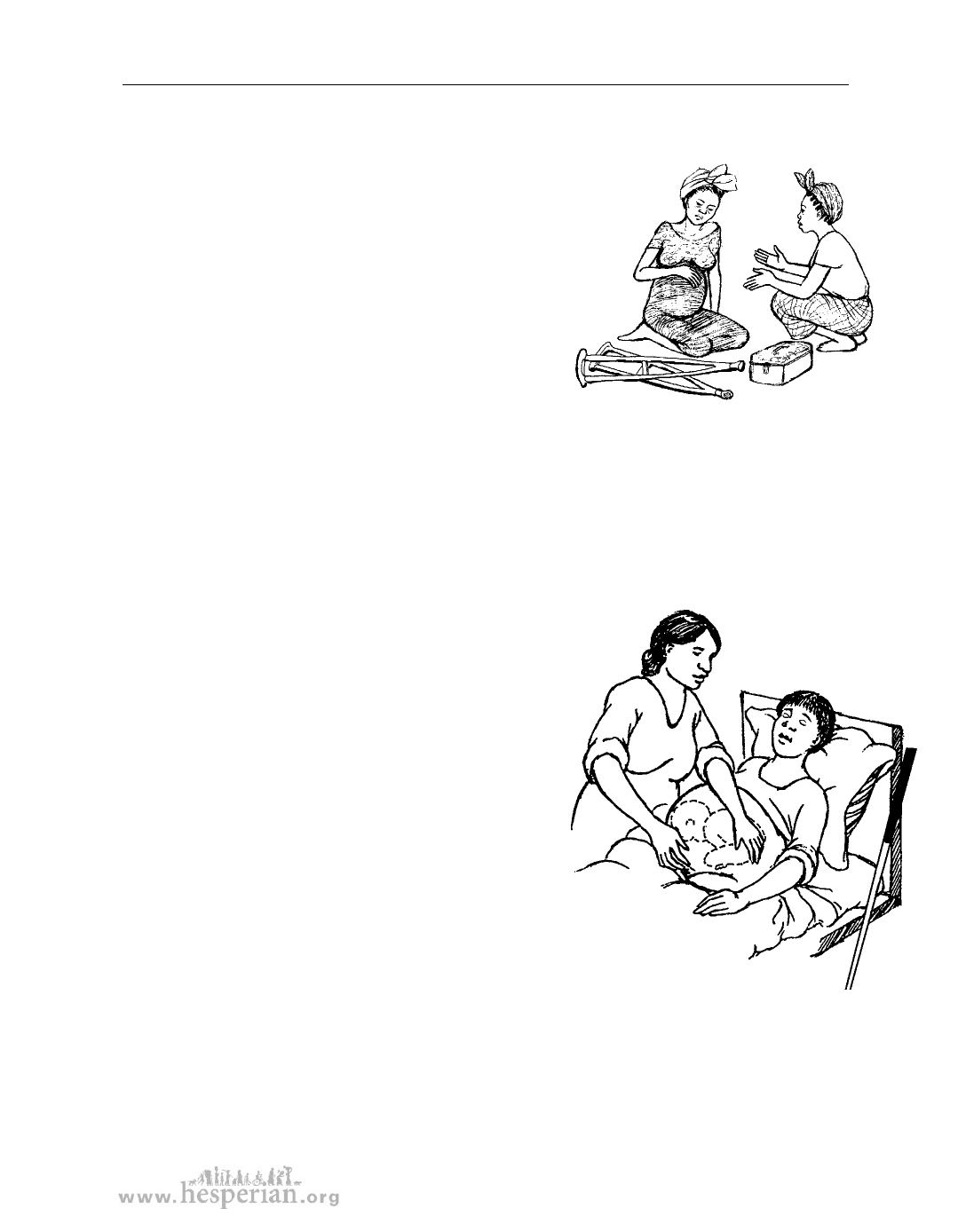
Birth by operation 245
Female genital cutting (FGC, female circumcision)
In some communities—mostly in Africa, but also
in parts of South Asia, the Middle East, and other
parts of the world—girls and young women are
cut on their genitals. Like many cultural practices,
female genital cutting is a way that girls’ bodies
are changed so they are considered beautiful,
acceptable, or clean. But while this tradition
may be meaningful for the community where it
is practiced, female genital cutting has serious
harmful effects on the health and well-being of the
girls who are cut. In the long term, female genital
cutting can lead to urinary infections, emotional damage, loss of sexual sensation
or ability to have sex as an adult, and long, difficult labors which can lead to death
of the baby or the mother. If you are a woman who has had your genitals cut and
then sewn partially closed, talk with an experienced midwife or health worker. Your
genitals will need to be cut open before you give birth.
Danger signs during labor
Most women, including women with disabilities,
give birth safely. But when something goes wrong
during labor and birth, it is very important for a
woman to get the care she needs to save her life.
(For more information about safe labor and birth
and the problems that can arise, see A Book for
Midwives.) Here are some of the danger signs that
can let you know when to get help:
Waters break but labor does not start
within 24 hours
Go to a health center or hospital. When the
waters have broken, the risk is much higher that
you or your baby could get a serious infection.
You may need to get fluids or medicines in the
vein (intravenous, IV).
Baby lying sideways
Go to a hospital. Do not try to change the position of the baby once labor has
started. This can tear the womb or separate the placenta from the womb wall.
A baby lying sideways cannot be born without an operation.
A Health Handbook for Women with Disabilities 2007